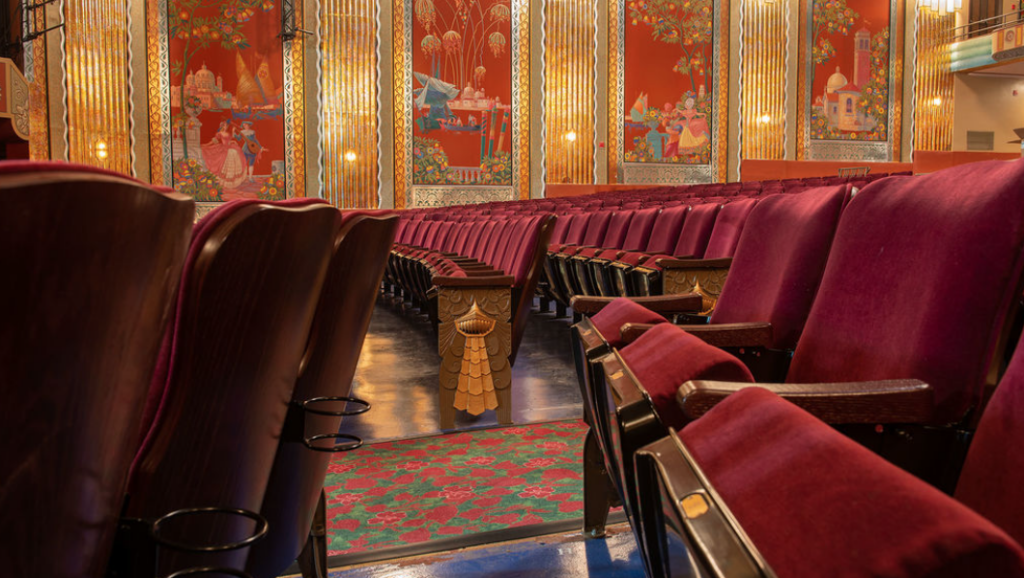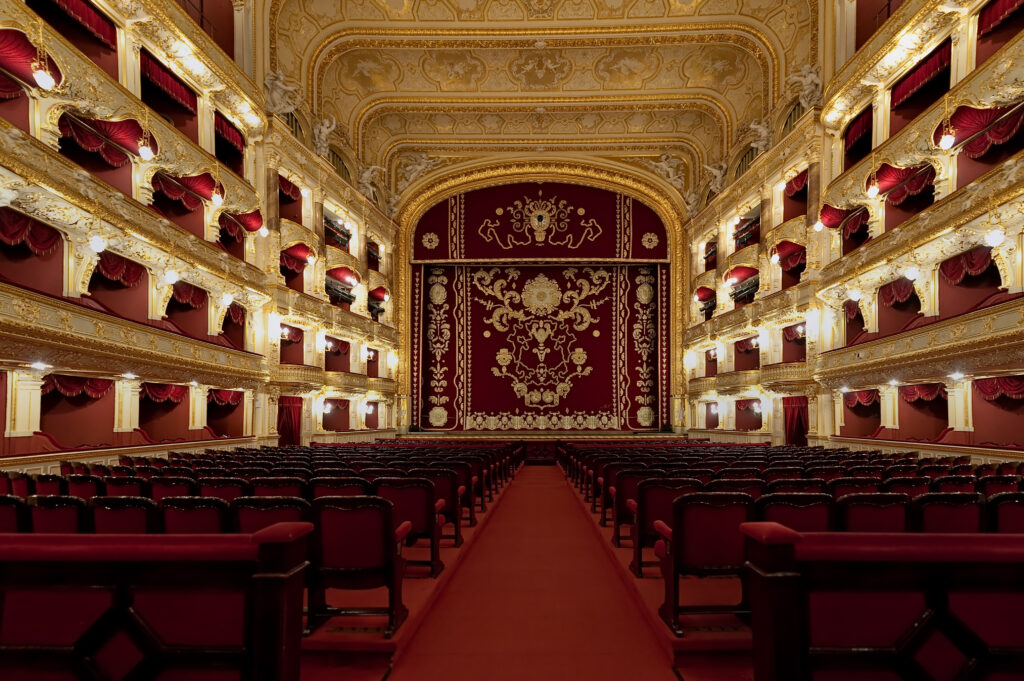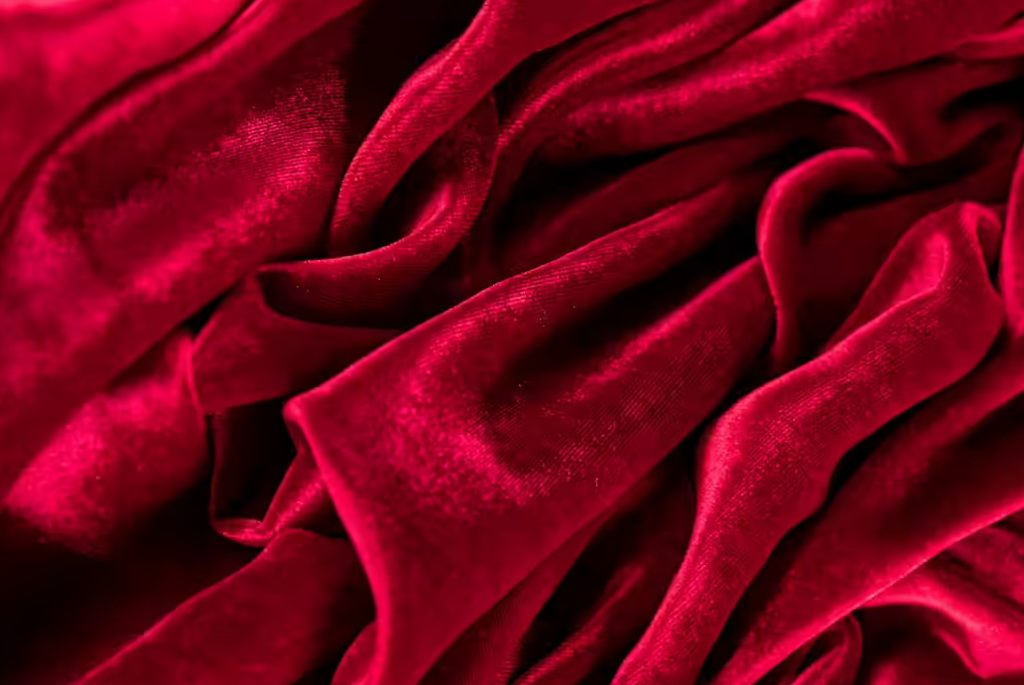Velour & Theaters: A Match Made in Cinema Heaven

Have you ever noticed that classic movie cinemas and live theaters always seem to have velour or velvet theater seating? Have you noticed how much more uncommon this theater trend has become over time? These days when it comes to home theaters and high-end theaters, rows of leather movie chairs are the more popular choice. This is likely because of leather’s modern look, durability, and stain resistance. But there is a reason that velvet and velour luxury fabric cinema seating can be found in iconic theaters around the world.
Plush fabrics like velour offer theater-enhancing benefits that historically made them the preferred upholstery of theater seats and curtains. This fabric’s benefits still carry over to today, and may just give you a reason to consider velour theater seating or curtains for your own home theater space. Read on for 3 reasons why velour is a vital fabric to incorporate into your home theater seating and soundproofing design!

Before Getting Into It, What is Velour, Anyway?
Let’s start with the basics. Velour is a fabric very similar to velvet. It was first produced in France in the 1840s and is French for “velvet”. It was originally produced to provide a more affordable alternative to velvet, which is typically made of silk. Velvet has since equalized in price with velour.
Velour today is either produced with polyester, but more commonly cotton, and is weaved with a “pile knit” technique, where yarn is knitted into loops that are then sheared evenly along the surface. This gives the fabric a soft-to-the-touch feeling with protruding fibers that move when one runs their hand along the fabric. When moved back in the opposite direction, the velour appears to be a darker shade. An historic staple in luxury theater seating, parlours, ballrooms and more, this fabric always enchants, which explains its staying power in the theater industry.
1. Velvet & Velour’s Theatrical Past has Lasted to Present
Why is it that in classic theaters, live and movie alike, oftentimes the seating is upholstered with specifically red velvet/velour? Well, there’s a reason for that. Red velour seating in theaters started in Italian opera houses, and from there became popularized because of the popularity of said operas.
The red shade was chosen as it reflects less light when lights are low and is the first color humans can’t see as our eyes adjust to the dark. This provides a blacked-out experience in the audience, as opposed to other shades of velvet/velour like blue and green that reflect light even in the dark. As the opera house was equated with the high culture and wealth, luxury theaters filled with dark red velour seating become how a theater signaled it was a place for upscale clientele.
Additionally, velvet and velour have been used for a long time to cover seats and even act as the main stage curtain because of their sound-absorbing quality. This material also takes a very long time to wear, and can stand up to 100,000 cycles of rubbing before an abrasion appears. Ever noticed beautiful antique parlour couches and chairs are upholstered in velour or velvet? It’s a fabric that lasts. This makes velvet, and more specifically velour, a favorite material when it comes to theater seating and theater curtains in general, a something to think about in your home theater. Rows of velour theater-style recliners not only look luxurious, but they’re functional and durable.

2. Velour Absorbs Sound like No Other
Because of the soft, thick fibers of velour, the material is known to absorb sound. The velour traps sound waves in its fibers, which then turn to heat. Any waves that make it through the fabric, may then reflect back, for example, hitting walls behind curtains. However, the reflected sound waves are softened, preventing an echo effect as they travel back through the velour.
This sound absorption is beneficial in a home theater to get the best sound quality while watching your favorite shows and movies, ensuring sound quality is crisp. Using velour fabric on your theater chairs will also save you the cost of having to buy extra sound dampening panels for your home theater, creating a win-win situation.
It is velour’s sound-absorbent property that made it the choice fabric for Valencia’s newest bespoke theater seat: Naples. This chair is crafted with Piano Black Wood finished with Black Diamond Lacquer and has a low-profile headrest to lessen reverb around the ears, creating a better audio experience.
Therefore, it was only appropriate that Valencia’s Parisian Velour be used to add to the sumptuous feel of this chair and its excellent audio-tailored features. Our Naples cinema seat model upholstered in velour is just the vintage-modern twist on velvet theater chairs that complement any design with a nod to the US’s Gilded and Golden Ages.
Velour vs. Leather: What’s the Effect on Sound?
Before we talk about the third reason velour is a great choice for luxury fabric home theater seating, let’s discuss how velour and leather differ in their contact with sound. Leather may be your preferred material because of its smooth texture and supple feel. The other thing about leather today is that, just like velour seating was a signal a theater was luxurious, now leather is just as much the same symbol, especially in home theater seating.
The texture of leather is completely different from velour, and so is its interaction with sound. Unlike velour, leather reflects sound back, which can be distracting and irritating. The difficult part of designing any home theater is creating an acoustic setup that will balance sound absorption and reflection.
As a result, leather is also a great material for home theater seating, but it all depends on whether or not you need more sound absorption or reflection. If you need more sound absorption, like in a basement home theater, velour might make more sense than leather. This, of course, will also be determined by other materials in the room like curtains, panels, speakers, and more.

3. Velour Fabric Seating Provides Undeniable Comfort & Elevated Style
Aside from the incredible audio benefits of this fabric, velour’s comfort is its other strength. Velour is extremely soft-to-the-touch and has a luxurious, plush feel. This fabric is flexible in comparison to velvet because of its knitting, and provides a warm, relaxing feeling. The wide variety of hues that Valencia’s Parisian Velour comes in also makes it a popular material for theater seating, as the rich colours add to the ambience of any room.
We will always be a fan of red velour theater seating, because it’s evocative of old movie theaters, opera houses, symphony halls, and more. Choosing that rich red shade of velour nods to the history of US theater at-large, but it’s also a nod to the development of luxury theater furniture for the home. It’s a matter of heritage, really. If you’re interested in how to incorporate red velour seating into your home theater, check out this article.
So, Is Velour a Theater Material of the Past or the Future?
Velour’s merit cannot be denied in the theater industry. Yes, it is true that velour and leather can both be great options for your home theater depending on your acoustic needs and aesthetic goals. But as leather has taken over theater seating trends, velour’s value has been forgotten.
Velour-upholstered media room furniture can be especially beneficial if you have a proclivity for watching live concerts, rock operas, or musical documentaries, and you want to experience the best sound quality. Or even if you just generally love to be immersed in the magic of movies and you recognize the importance of sound in its ability to transport you to another world.
Either way, velour shouldn’t be overlooked when you’re customizing your Valencia home theater seating. It not only has an established history when it comes to audio entertainment, but its distinguished look and comforting texture are sure to add to any home theater experience. So, whether it’s upholstering your theater seating with velour, hanging velour curtains, or buying velour pillows and blankets, velour is a vital fabric to incorporate into every home theater space.
